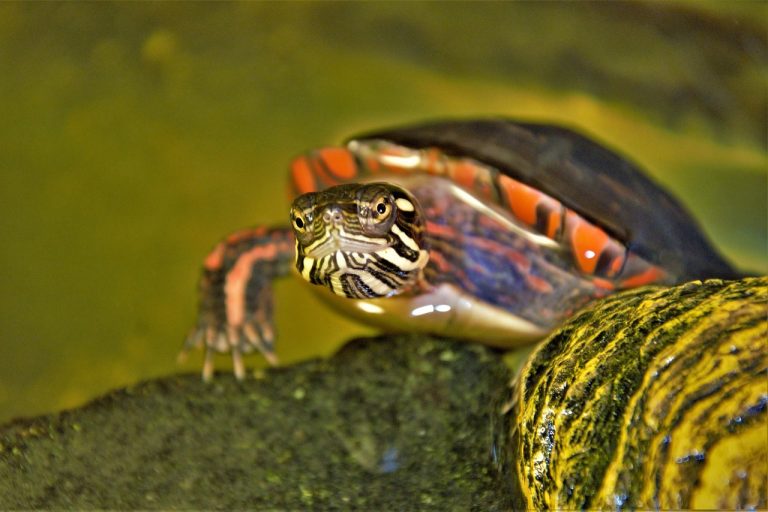How To Catch A Pond Turtle? [Traps, Baits, Tips]
Do you find yourself sharing your pond or swimming pool with a turtle? Or perhaps one has decided to make your pond its permanent residence? If you answered yes to either of these questions, it’s high time you learned the art of capturing a turtle – a skill that may come in handy.
Capturing pond turtles can be accomplished through various methods, ranging from setting traps to utilizing bait and line techniques. The most suitable approach depends on factors such as the size of the pond, the number of turtles you wish to catch, and the amount of time you’re willing to invest.
Turtles are undeniably charming creatures, and stumbling upon one in your pond can be a delightful surprise. For some, catching turtles and keeping them as pets is a hobby. However, it’s crucial to approach this practice with the right level of knowledge and care to ensure the well-being of these fascinating creatures.
In this article, we’ll explore the various methods for capturing and handling turtles without causing them harm. Additionally, we’ll delve into the pros and cons of introducing these animals into the ecosystem of your backyard pond. So, without further ado, let’s dive into the world of turtle capture and care, shall we?

How To Locate A Turtle?
If you happen to live in an area with only a handful of ponds, chances are you won’t have any difficulty spotting turtles nestled among the rocky crevices that dot the pond’s landscape.
During times of relatively dry weather, when the water level is just slightly above ground level, turtles often gravitate towards the outskirts of the water, where they can leisurely bask in the warmth of the sun. This sun-drenched spot serves as an ideal haven for these reptiles, providing both warmth and a convenient vantage point to survey their surroundings.
Different Ways To Catch A Pond Turtle
When it comes to capturing turtles within a pond, there are a variety of approaches one can take. One efficient method is the bait and line technique, which utilizes drop lines and cleverly protects the bait from being snatched up by fish, typically by enclosing it inside small cans.
Now, let’s delve into a couple of simple yet effective methods for catching turtles:
- Digging a Hole: This method involves creating a strategically placed hole adjacent to where the turtle is spotted. The hole should be approximately ten inches deep and wide, with steep edges to prevent the turtle from climbing out. Scatter a generous amount of bait around the trap, enticing the turtle to venture inside. Crushed lettuce leaves can be an enticing alternative to whole ones, sprinkled both around the trap and inside it. While there’s no guarantee the turtle will go for the bait within the hole, this method has proven effective in enticing turtles to investigate and ultimately fall into the trap.
- Bait and Line: Another approach involves utilizing drop lines, where the bait is enclosed within small cans to deter fish from devouring it. Start by removing the top of a soda can (or any similarly sized container) and puncture a small hole in the center of the base. Thread the free end of the fishing line through the hole, attaching a treble hook to the end and baiting it with fish or other flesh. Submerge the baited can in the water and secure the opposite end of the line to a sturdy branch or root. Adjust the length of the line accordingly to ensure the bait remains submerged, tempting passing turtles to investigate. As turtles insert their heads into the container to retrieve the bait, they become ensnared, providing an effective yet time-consuming method for capturing them.
These techniques offer viable options for capturing turtles in a pond setting, each with its own set of advantages and considerations. By employing these methods thoughtfully and responsibly, individuals can safely and effectively manage turtle populations while respecting their natural habitats.

How To Make A Turtle Trap?
When it comes to capturing pond turtles, the type of trap you use will largely depend on the species you’re targeting. Generally, there are two main types of turtle traps: those submerged underwater and those floating or surface-based.
Let’s explore both types and their construction:
- Underwater or Submerged Traps:
a. Wire Basket Traps: These traps resemble fish baskets but are larger and feature a unique oval-shaped tunnel entrance. The tunnel should be broad enough for turtles of varying sizes to enter. The basket itself should measure around three to four feet in length and two feet in width, constructed from sturdy wire mesh. A door should be incorporated into the trap for easy removal of captured turtles.
b. Slat Traps: Constructed by attaching slats or lattice timber to a frame, these traps feature funnel-shaped entrances at each end. The trap should be adequately weighted down and marked with a buoy for easy retrieval. - Surface or Floating Traps:
a. Log Traps: Crafted from substantial wooden boards or logs, these traps feature a wire or cloth basket suspended within a frame. Logs or poles are attached to the structure to provide stability, and turtles are lured in by the opportunity to bask in the sun.
b. Tiltboard Traps: Constructed with a frame covered in wire or cloth, these traps feature tilt boards that can easily tilt or spin when turtles climb on them. The tilt boards are linked to the frame with nails, ensuring that turtles are unable to escape once inside.
Each type of trap has its advantages and considerations, depending on factors such as the target species, pond size, and personal preference. By carefully selecting and setting up the appropriate trap, individuals can effectively manage turtle populations while minimizing harm to these fascinating creatures.
Which Trap To Use?
When it comes to capturing turtles, both underwater traps can be effective, but each has its own advantages. The wire trap, being lighter, is easier to handle and relocate compared to the slat trap. To prolong the lifespan of both types of traps, it’s essential to treat them with a preservative.
Baiting underwater traps is crucial for success, and the type of bait used isn’t as important as ensuring it’s securely placed. It’s recommended to use cans with holes punched in them to contain the bait, hung from the tip of the trap. This allows the scent of the bait to attract turtles while preventing it from being washed away by the water current.
Surface traps are particularly effective in ponds with limited features such as islands, floating logs, or stumps. On the other hand, tiltboard traps tend to outperform log traps because log traps can become waterlogged over time, requiring removal from the pond for drying out. This makes tiltboard traps a more efficient and sustainable option for turtle capture in the long run.

What Is The Best Bait For Turtles?
The effectiveness of a turtle trap often hinges on the allure of its bait, making the selection of bait a crucial aspect of trapping success.
Various types of bait can be used in turtle traps, with meat being the most common and successful choice. Here are some options for baiting turtle traps:
- Fish: Live fish are highly enticing to turtles and are often the preferred bait for live traps. Bluegill, small bass, or minnows can be hooked or tethered to the trap using fishing line. Additionally, catfish heads or other fish scraps can be used as affordable alternatives.
- Beef Cuts: Different cuts of beef, particularly tougher cuts, can also be effective bait for turtle traps. Less expensive cuts like neck meat are durable and can last longer in water, attracting turtles over an extended period. Local butcher shops may provide leftover meat scraps for baiting traps.
- Vegetables: While less attractive to turtles compared to meat, various vegetables can still be used as bait in live traps. Lettuce, spinach, and kale are commonly used greens that can entice turtles. Leftover vegetables from meals can serve as free bait, but heavily seasoned food may be less appealing to turtles.
- Worms: While not as effective as meat, worms can serve as a cost-effective and readily available bait option for turtle traps. Using a bait bag to enclose the worms can prevent fish from consuming them before the turtles have a chance to locate the trap.
When baiting turtle traps, it’s important to consider the preferences of the target species and the likelihood of interference from other aquatic animals like fish. By selecting the appropriate bait and properly securing it within the trap, individuals can increase their chances of successfully capturing turtles for relocation or study.
What Is The Best Time To Catch Turtles?
Capturing pond turtles is most effective during the summer months when they are most active. Specifically, the early morning hours before the sun becomes too intense are ideal for increasing your chances of success.
During the summer, turtles are often more active during the cooler morning hours, making it an opportune time to set traps or employ capture methods. However, depending on the type of trap used or the specific approach taken, capturing turtles may also require monitoring and efforts during nighttime periods.
By strategically timing capture efforts to coincide with the turtles’ natural activity patterns and environmental conditions, individuals can maximize their chances of successfully capturing turtles for relocation, study, or management purposes.
How To Relocate Turtles?
Once you’ve successfully captured turtles residing in your pond, it’s crucial to handle their relocation with care and consideration. Here’s what you need to keep in mind:
- Contact Local Authorities: Before attempting to move the turtles, reach out to your local conservation office or Department of Wildlife to inform them of your intentions. Depending on your state regulations, you may need to obtain a permit before relocating the turtles, especially if they’re considered a protected species.
- Consider Potential Impacts: Moving turtles to a new location can have several negative consequences. Turtles may experience stress and confusion when suddenly introduced to unfamiliar surroundings, making it challenging for them to find food and stay safe from predators. Additionally, introducing new turtles into an existing habitat can lead to competition for resources, and there’s a risk of spreading diseases between turtle populations.
- Seek Expert Advice: Before attempting to relocate turtles on your own, it’s advisable to consult with experts from your local conservation agency. They can provide guidance on the best practices for relocating turtles and may have prior experience dealing with similar situations. They can also assist you in finding suitable new habitats for the turtles and ensure that the relocation process is carried out responsibly.
By seeking guidance from experts and following proper procedures, you can ensure that the turtles are relocated safely and responsibly, minimizing potential negative impacts on both the turtles and their new environment.
What Size Of Hooks For Catching Turtles?
Capturing turtles doesn’t require fancy equipment; a few essential supplies will suffice. Here’s what you’ll need to get started:
- Sharp Fishing Hooks: Opt for hooks that are at least three and a half inches long with an inch spacing between them. It’s crucial to ensure they are sharp for effective capture. Even new hooks should be sharpened before use. Depending on the size of your catch, consider 4x strong 5/0 to 8/0 hooks from reputable brands like Gamakatsu or Mustad, or circle hooks for a different approach.
- Nylon Rope: A sturdy nylon rope is essential for securing traps or setting up baited lines. Ensure it’s strong enough to handle the weight and potential resistance of captured turtles.
- Rubber Boots: Protect your feet with rubber boots when working in and around water. They’ll keep your feet dry and provide traction on wet surfaces, ensuring your safety while capturing turtles.
- Knife: A sharp knife is handy for various tasks, such as cutting rope, preparing bait, or releasing captured turtles. Keep it safely stored when not in use.
With these basic supplies, you’ll be ready to start capturing turtles safely and effectively. Remember to follow local regulations and guidelines to ensure ethical and responsible trapping practices.

Can A Turtle Survive A Fish Hook?
In areas frequented by fishermen, any species of turtle may potentially get hooked, but snapping turtles are more commonly caught on hooks compared to other turtle species. This can be attributed to their large size, wide distribution, and active feeding habits.
Leaving a hook embedded in a turtle can lead to serious consequences, including the death of the turtle. To mitigate the harm caused by fishing hooks to turtles, several measures can be taken.
Using hooks without barbs is a proactive step when fishing in areas with significant turtle populations. Barbless hooks make it easier to remove accidentally hooked turtles, reducing the risk of injury and mortality.
In the event of a turtle becoming accidentally hooked, it’s important not to simply cut the line and discard the hook. Instead, efforts should be made to safely extract the hook to minimize harm to the turtle.
By adopting these practices, fishermen can help protect turtle populations and minimize the negative impact of fishing activities on these creatures.
How To Hold The Turtle After Catching It?
When handling a turtle, it’s crucial to grasp it around its central area and avoid placing your fingers near its limbs. These creatures possess biting capabilities, and their unexpectedly large and powerful claws can cause injury.
Exercise caution and maintain a firm grip on the turtle’s body to prevent any unexpected movements or attempts to bite. By handling the turtle safely and securely, you can minimize the risk of injury to yourself while ensuring the well-being of the turtle.
Tips That Will Help To Catch Turtles
Here are some helpful tips to assist you in catching a turtle:
- Start with a Trap: If you’re new to turtle catching or have limited time, setting a trap is a straightforward method. Allow the trap to sit undisturbed for a few days to increase your chances of success. Keep in mind that additional time may be required for each attempt, as other creatures may consume the bait.
- Be Patient: Successful turtle catching may require patience and persistence. While it may take some time to achieve success, consistent efforts will eventually pay off.
- Use Protective Gear: If you’re apprehensive about handling turtles directly, consider wearing protective gloves, such as snow or gardening gloves, to prevent scratches or bites. This will help you maintain a safe distance from the turtle while handling it.
- Research Turtle Species: Familiarize yourself with the species of turtles native to your region before attempting to catch one. Understanding their behavior and habits can help you choose the most effective trapping method.
By following these tips and taking necessary precautions, you can increase your chances of successfully catching a turtle while ensuring your safety and the well-being of the animal.
Are Turtles Beneficial To Pond?
The presence of turtles in ponds can often be beneficial to the ecosystem, contributing to its cleanliness and overall balance. While it’s generally recommended to leave turtles undisturbed in their natural habitat, having a small number of turtles, particularly slider turtles, in your pond can actually be advantageous.
Here’s a closer look at the positive aspects associated with having turtles in a pond:
- Contribution to Cleanliness: Turtles are omnivorous creatures, consuming both plants and animals. They often feed on sick or dead fish, which helps maintain the cleanliness of the pond and reduces the risk of diseases caused by decaying organic matter.
- Control of Underwater Weeds: Turtles also play a role in controlling underwater weeds by consuming specific types of vegetation that may otherwise cause issues in ponds. This helps in managing the growth of unwanted aquatic plants.
- Limited Ecological Impact: When present in reasonable numbers, turtles have minimal impact on the overall ecological balance of the pond. While they may compete with fish for food, there is no evidence to suggest that having a modest number of turtles would lead to fish starvation.
- Aesthetic Value: Aside from their ecological benefits, turtles add to the visual appeal of the pond and contribute to its natural charm. Observing turtles in their aquatic habitat can be a fascinating and enjoyable experience for pond owners and visitors alike.
Overall, maintaining a balanced population of turtles in your pond can enhance its ecological health and aesthetic appeal. However, it’s essential to ensure that the number of turtles is kept at a manageable level to prevent any negative impacts on the pond’s ecosystem.
Are Turtles Detrimental To Ponds?
While turtles can offer certain benefits to the ecosystem, an excessive population of turtles in a pond or lake can pose various challenges and become a problem. Here’s a closer look at why turtles aren’t always beneficial for ponds:
- High Reproduction Rate: Turtles have a high reproductive rate, and their population can quickly grow out of control, particularly in smaller ponds. Overpopulation can lead to various issues, including competition for resources and degradation of water quality.
- Predation on Fish: If you have fish in your pond, certain species of turtles may prey on live fish, such as goldfish or koi, which can be detrimental to your fish population and disrupt the pond’s ecosystem balance.
- Consumption of Aquatic Vegetation: Turtles will consume aquatic vegetation if given the opportunity, which can lead to the depletion of vegetation and affect the overall health of the pond.
- Aggressive Behavior: When threatened or provoked, snapping turtles, in particular, can exhibit highly aggressive behavior. Their powerful bites have the potential to cause significant injuries to humans or other animals in or near the pond.
- Transmission of Diseases: Turtles, including common pet species, can carry and transmit diseases such as salmonella to humans. This poses a health risk, especially if people come into contact with turtles or their habitat.
While leaving turtles undisturbed is generally advisable, there are situations where turtle populations may become a nuisance and require management or removal. In such cases, it’s important to approach the situation with caution and follow proper procedures for effective and humane management of turtle populations.
Lastly…
Pond turtles, commonly found across North America, are among the most prevalent types of turtles in the region. While there are numerous species within the Emydidae family, only a select few are commonly encountered in ponds or kept as pets.
While turtles can be charming additions to your pond, they may also pose challenges and disrupt the ecosystem. Whether you view them as beneficial or problematic, having an effective method to capture pond turtles is essential.
However, it’s crucial to consider the well-being of the turtle and its natural habitat. If the turtle appears content and poses no immediate threat to itself or others, it’s best to leave it in its natural environment. Attempting to relocate a turtle unnecessarily can disrupt its life and may not be in its best interest.
In cases where a turtle is at risk, such as in industrialized areas or hazardous environments, it may be necessary to intervene. However, such actions should be taken with caution and with the welfare of the turtle as a priority.
Ultimately, understanding how to capture a turtle is just one aspect of responsible stewardship of our natural environments. It’s important to approach such interactions with empathy, respect, and consideration for the well-being of the creatures involved.
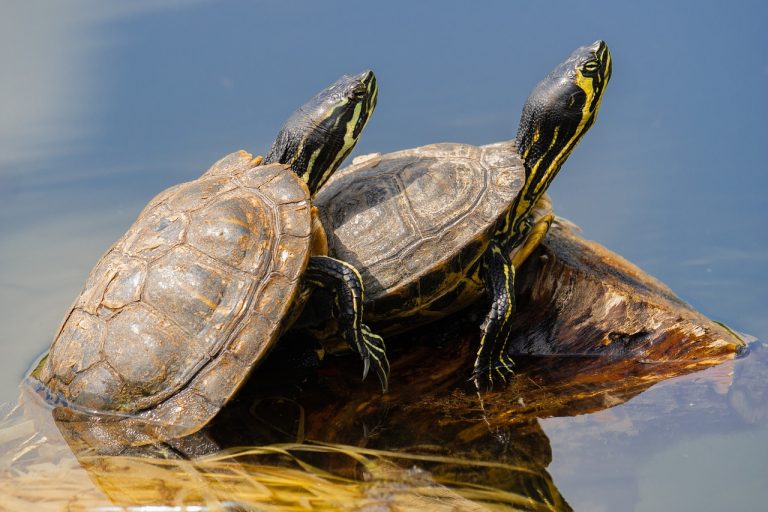
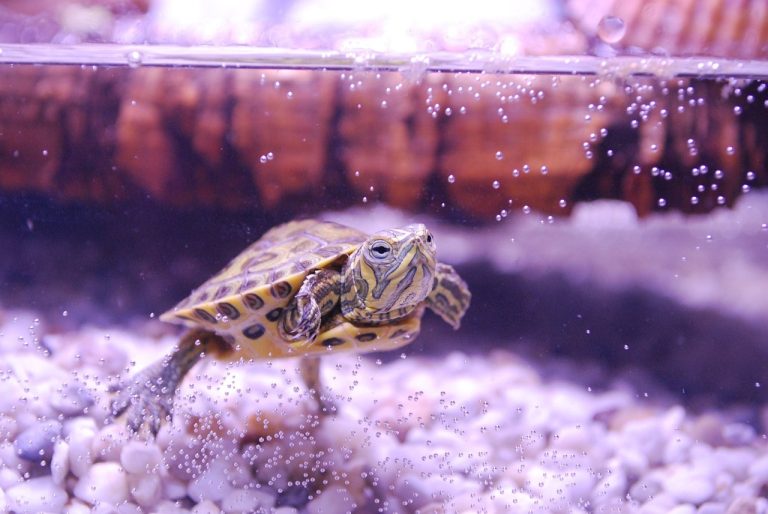
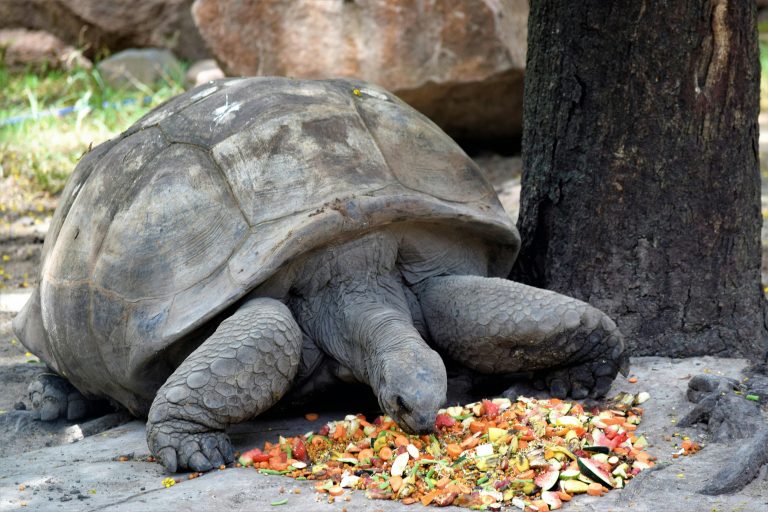
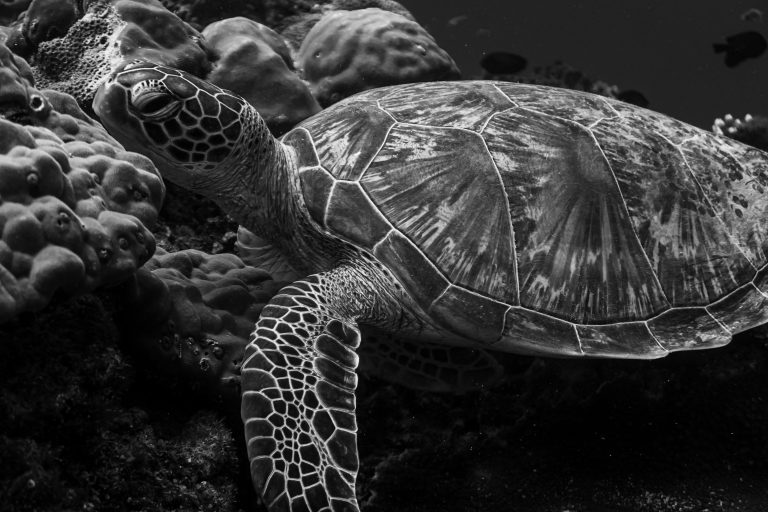
![What Human Foods Can Turtles Eat? [Food Chart]](https://spreadhapiness.com/wp-content/uploads/2024/03/eating-1-768x511.jpg)
